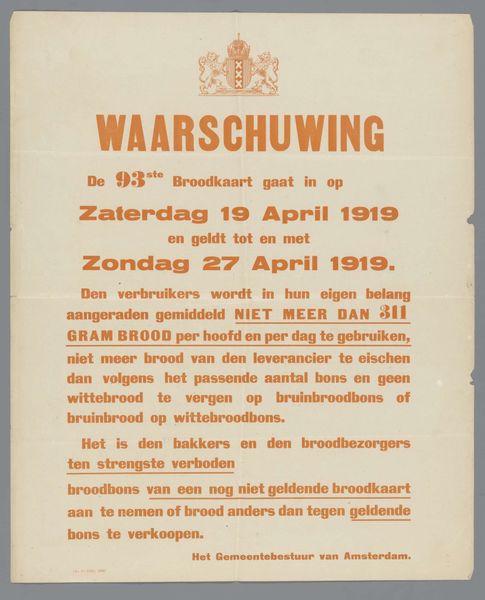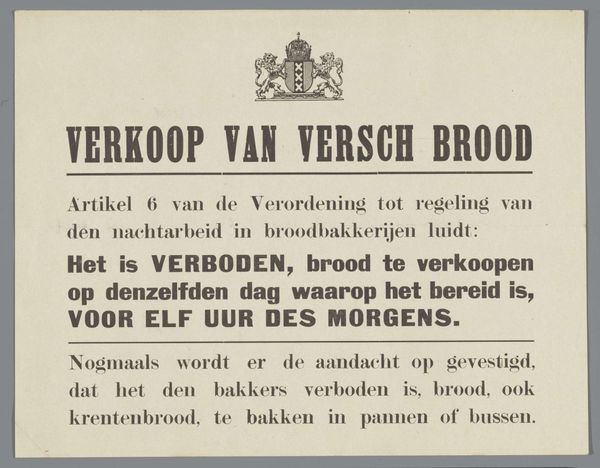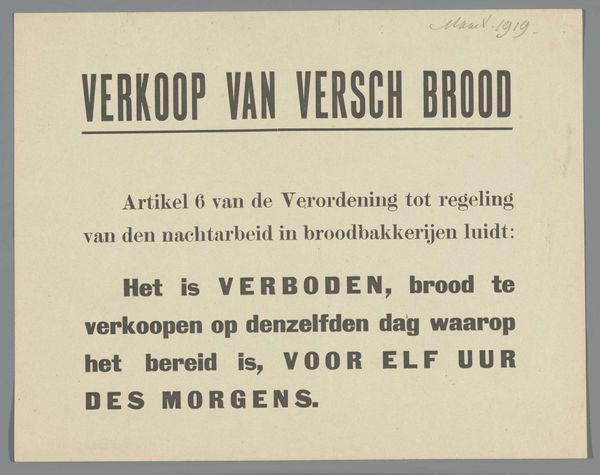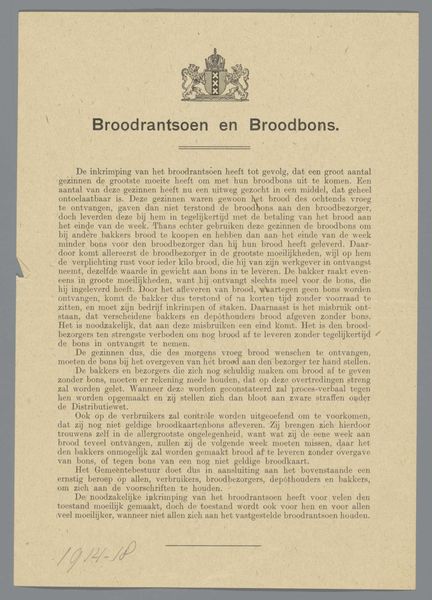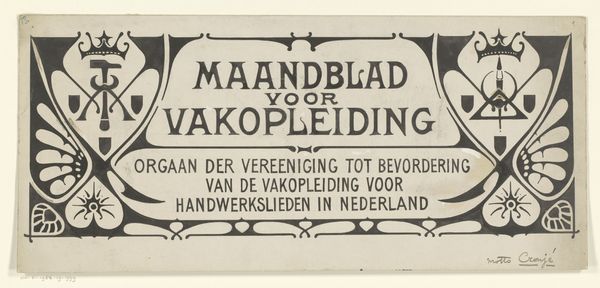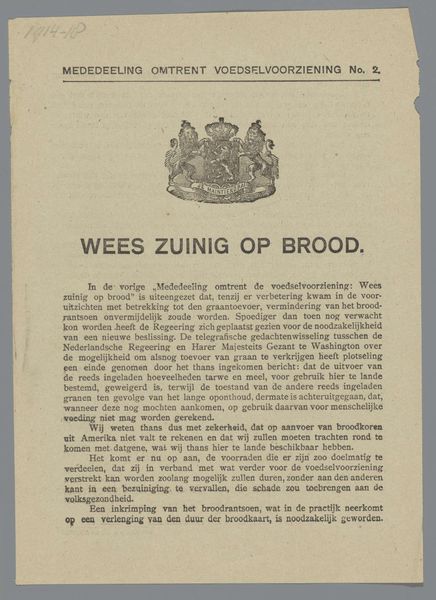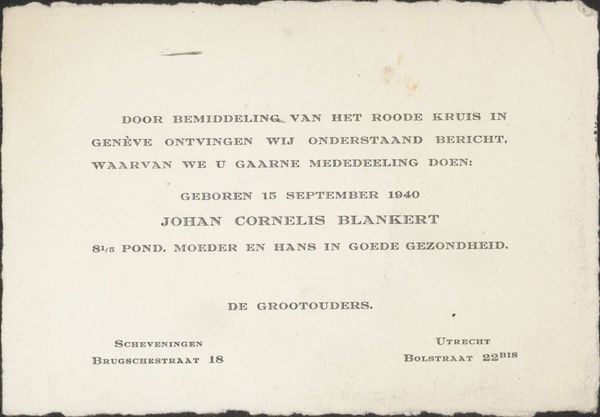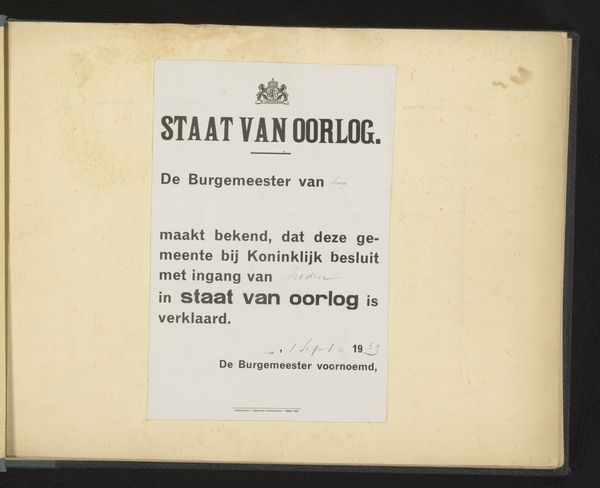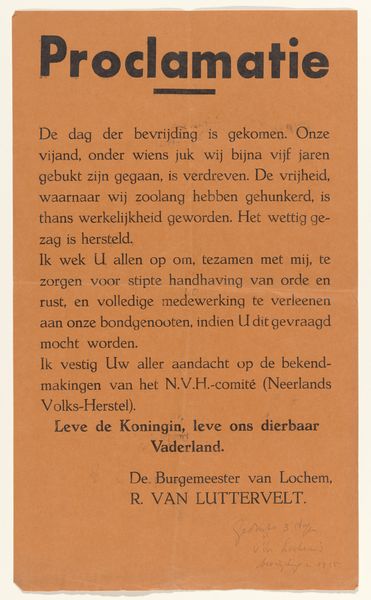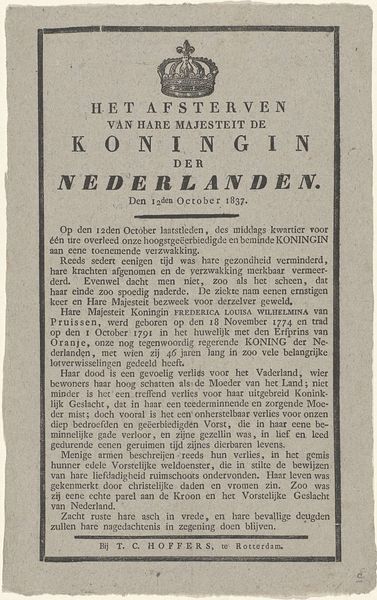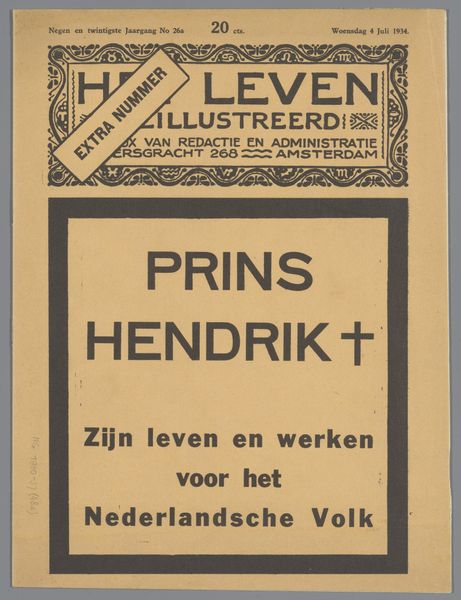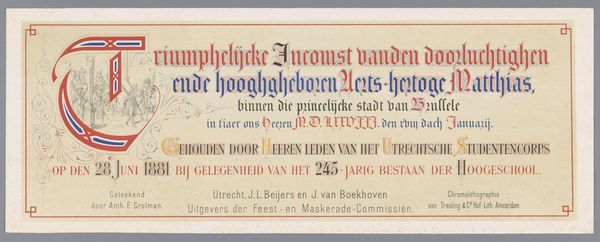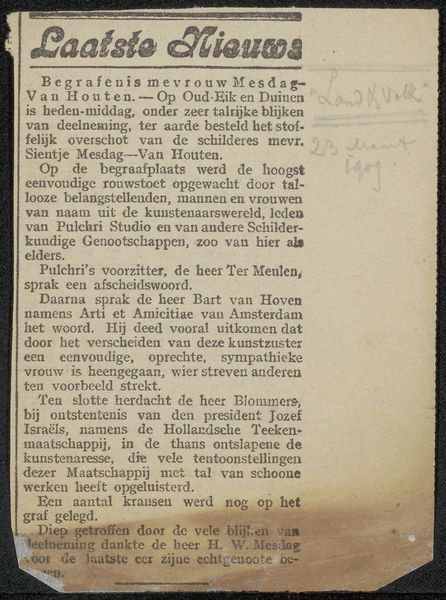
graphic-art, print, poster
#
graphic-art
# print
#
poster
Dimensions: height 40.6 cm, width 33.4 cm
Copyright: Rijks Museum: Open Domain
Curator: Let’s consider this poster from the Rijksmuseum collection. Titled "Aanplakbiljet," it's estimated to be from 1918, a print likely made by the Municipality of Amsterdam. My first impression is just how austere it feels. A warning! What do you see? Editor: It immediately struck me too. The stark black lettering against that plain background, it feels very authoritarian. What’s particularly interesting is what the warning actually *is*. Curator: Absolutely. This poster served as a public announcement, specifically concerning the 37th bread ration card effective January 1st to January 11th, 1918. It dictated that consumers should use no more than 250 grams of bread per person, per day. Editor: So this wasn't just any warning; it was about access to a basic necessity during wartime, when access to food was being tightly controlled. The warning targets bakers and bread deliverers, forbidding them from exchanging bread outside of the official rationing system. Curator: Precisely. We must remember the historical context: 1918 was a particularly difficult year near the end of the First World War. This poster shows us the Municipality intervening directly in daily life due to scarcity. The heavy impact on public morale can't be ignored, because these rationing systems impacted daily life. Editor: And look at the language used. It's not couched as a polite request; it’s a strict order, almost devoid of any justification beyond "the consumer’s own interest.” I find the paternalism incredibly revealing. This reveals an important facet of governance in times of crisis, one that disproportionately affects marginalized communities, particularly immigrants and people of color. Curator: Yes. I agree that this rationing system would disproportionately burden these demographics. The power dynamics are undeniable. But there’s also a certain efficiency to it. The government needed to manage dwindling resources. It tells a complex story. Editor: Complex, yes, but deeply embedded with questions of control and social equity. It is essential we continue to ask what systems of control are encoded here. I’m always reminded to examine systems, instead of accepting the apparent narrative. Curator: It's important to remember this artifact presents more than meets the eye. Let us remain skeptical of seemingly benign communications, in our current moment. Editor: Let's indeed, be critical of the structural inequalities these types of systems engender. We’ve both seen today how such a seemingly simple artifact opens pathways to challenging historical narratives and critically assessing power in action.
Comments
No comments
Be the first to comment and join the conversation on the ultimate creative platform.
